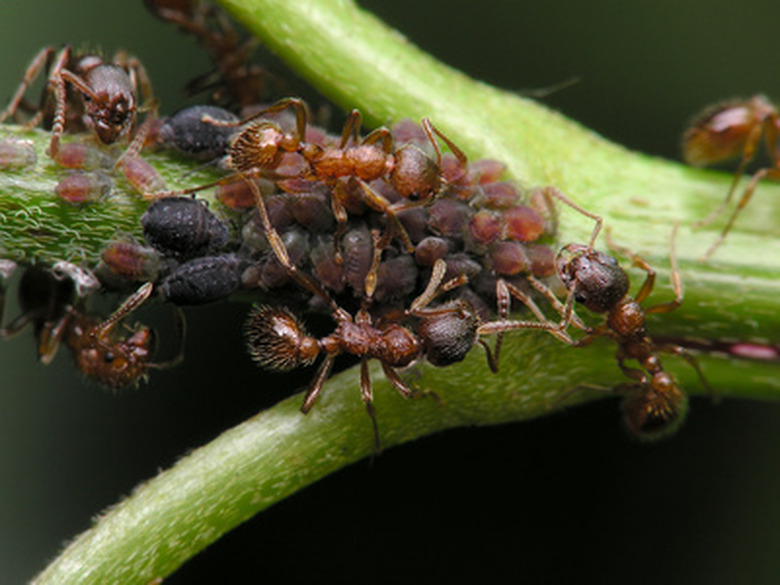What Do Ants Eat?
On the whole, ants eat just about everything, but there are over ten thousand different types of ants, and not all species eat the same things. For baiting purposes, pest control experts classify ants into two groups according to ant diet. Sugar ants love sugar, honey and all things sweet while grease ants love oily, fatty and greasy food. That's a good distinction to keep in mind as far as North American ants are concerned, but if you travel to the tropical regions of Central and South America, or if you go to Africa, you have to be on the lookout for marauding groups of carnivorous ants who will eat rodents, pigs, goats, chickens and even you, if you don't get out of their way.
Anatomy and the Ant Diet
Anatomy and the Ant Diet
One of the facts about ants you can't help but notice if you observe a good-sized one, such as a carpenter ant, is that they definitely have mouths – actually mandibles. They feed by lifting small food particles to their mandibles and swishing them around to mix them with saliva. They have a limited ability to deal with solid food, and when some ants reach maturity, they don't eat solid food at all.
Worker ants, which are the ones you see most often, have two stomachs. The first stomach is in the midsection, called the mesosoma. The ant can regurgitate food stored there to feed the colony. The second stomach is in the ant's hindquarters, called the rostrum. That's where salivated or liquid food goes to nourish the ant itself.
Taking Advantage of the Ant Diet for Baiting
Taking Advantage of the Ant Diet for Baiting
Ants are a common nuisance in North American homes, and one of the most effective control methods is baiting them with boric acid. They eat the bait and regurgitate the boric acid – which kills slowly – to the colony. For this strategy to work, you need to know what type of ants you're dealing with so you can use a food that will attract them. Big-headed ants, pavement ants and little black ants are some species that prefer greasy and oily food, whereas Argentine ants, odorous house ants and carpenter ants prefer sweets.
Peanut butter is an oily food that contains just enough sugar to attract sweet-loving ants and is a good all-around bait choice, especially if you mix it with something to liquefy it. Use vegetable or peanut oil if you suspect you're dealing with grease ants and honey for sugar ants. Not sure which type of ants they are? Put out a spoon filled with peanut butter and one filled with honey and watch which one they choose.
Misconceptions of Ants Feeding Habits
Misconceptions of Ants Feeding Habits
Leaf cutter ants live in Central and South America and are noted for their propensity for cutting leaves into small pieces. They don't eat these leaves though. They take them back to their burrows, chew them into a pulp and store the pulp with their feces. The fungus that grows on the stored mass is what they actually eat.
Carpenter ants burrow into wood to make their nests. You can identify a carpenter ant nest by the piles of undigested wood dust you find nearby. Carpenter ants don't eat the wood, but they do eat termites.
If you see ants swarming on the undersides of leaves in your garden, they aren't after the plant or its nectar. They are probably feeding on honeydew manufactured by aphid colonies on the leaves. The ants love this honeydew so much that they have been known to takes the aphids back to their nests. Whether you interpret this behavior as caring for the aphids to encourage them to make more honeydew or subjecting the aphids to slavery depends on your opinion of ants.
Cite This Article
MLA
Deziel, Chris. "What Do Ants Eat?" sciencing.com, https://www.sciencing.com/what-do-ants-eat-4606745/. 22 November 2019.
APA
Deziel, Chris. (2019, November 22). What Do Ants Eat?. sciencing.com. Retrieved from https://www.sciencing.com/what-do-ants-eat-4606745/
Chicago
Deziel, Chris. What Do Ants Eat? last modified March 24, 2022. https://www.sciencing.com/what-do-ants-eat-4606745/
